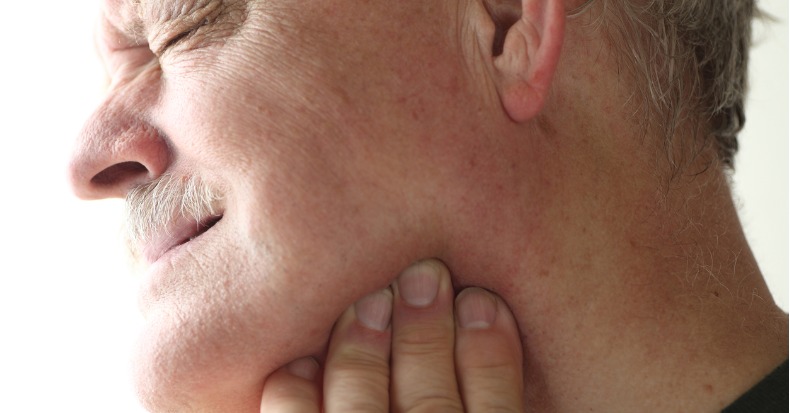Temporomandibular dysfunction (TMD) is a painful and disabling condition that affects the joints, muscles, and nerves of the jaw. Those who suffer with TMD experience challenges with opening their mouth, which can make eating solid food impossible or even semi-solid or soft foods challenging. Patients with TMD often experience sharp pain when yawning, and even breathing through the mouth can be uncomfortable in some cases. It’s also common for the TMD patient to have trouble sleeping and concentrating, which can make it more difficult to carry out their daily living and work activities. Even worse, TMD can co-occur with neck pain and headaches. These compounded complications can really take a toll on a patient’s quality of life. Let’s discuss how chiropractic care can benefit the patient with this bothersome trio of conditions.
The current research suggests that the relationship between TMD and headaches/neck pain is potentially bidirectional. That is, dysfunction in the neck may increase the risk for TMD, and likewise, TMD may elevate one’s risk for neck pain/headaches. One study that included 116 adults found that those with TMD were significantly more likely to have cervicogenic headaches. Additionally, examinations of 60 TMD patients revealed that most experienced moderate-to-severe impairments in cervical function. Another study found that treatment applied to the temporomandibular joint can improve cervical function in patients with non-specific neck pain. Hence the importance of conducting a thorough examination of patients with jaw and/or neck pain to identify contributing factors beyond the area of chief complaint.
If the function of the temporomandibular joint itself is impaired, a doctor of chiropractic may apply manual therapies, like mobilization, to restore motion to the joint. Treatment may also focus on improving the function of the masticatory, masseter, and temporalis muscles that play a role in chewing and opening and closing the mouth. This can be accomplished with soft tissue therapies and/or myofascial release depending on the patient’s unique case. A systematic review found that these treatments are as effective as botulinum toxin injections to relax the affected muscles.
To address cervical dysfunction, a doctor of chiropractic may use a combination of manual therapies, like spinal manipulation and mobilization, along with specific exercises to address weakness in the deep neck muscles that help stabilize the cervical spine. Treatment may extend to the upper back and shoulders as musculoskeletal disorders in these body sites can affect the function on the neck, leading to neck pain and headaches.
Fortunately, these treatments can be applied concurrently, which can provide patients with faster and potentially more satisfactory results. A study that included 38 patients with chronic cervicogenic headaches and TMD found that the combination of orofacial and cervical manual therapies resulted in better short-term and long-term results than cervical manual therapy treatment alone. Additionally, the inclusion of at-home exercises for the jaw and neck muscles may lead to better outcomes with respect to pain and disability.
Chiropractic is a great treatment option for patients suffering from the unhappy trio of TMD, neck pain, and headaches. If necessary, your doctor of chiropractic can co-manage your condition with your dentist and/or medical physician.
Thousands of Doctors of Chiropractic across the United States and Canada have taken "The ChiroTrust Pledge":
“To the best of my ability, I agree to
provide my patients convenient, affordable,
and mainstream Chiropractic care.
I will not use unnecessary long-term
treatment plans and/or therapies.”
To locate a Doctor of Chiropractic who has taken The ChiroTrust Pledge, google "The ChiroTrust Pledge" and the name of a town in quotes.
(example: "ChiroTrust Pledge" "Olympia, WA")
Content Courtesy of Chiro-Trust.org. All Rights Reserved.

